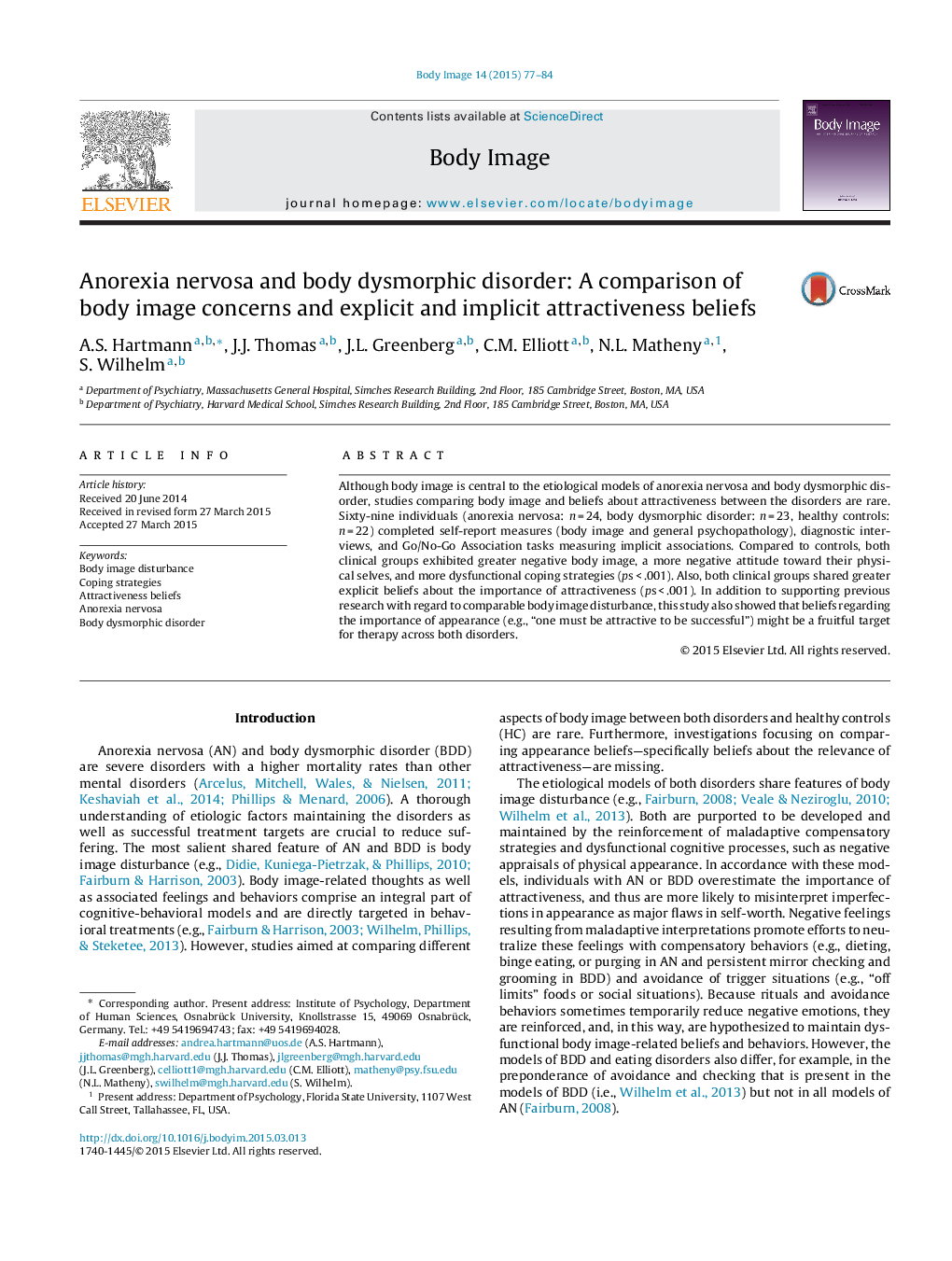| Article ID | Journal | Published Year | Pages | File Type |
|---|---|---|---|---|
| 902684 | Body Image | 2015 | 8 Pages |
•Individuals with AN and BDD show comparable body image disturbance.•Compared to HC, AN and BDD groups show more dysfunctional coping with body image concerns.•Compared to HC, individuals with AN and BDD strongly believe attractiveness is important for other areas of life (i.e., success).•Similarities between the AN and BDD groups might yield new questions for classification research.•Besides body image dissatisfaction, attractiveness beliefs might be a valuable treatment target in both disorders.
Although body image is central to the etiological models of anorexia nervosa and body dysmorphic disorder, studies comparing body image and beliefs about attractiveness between the disorders are rare. Sixty-nine individuals (anorexia nervosa: n = 24, body dysmorphic disorder: n = 23, healthy controls: n = 22) completed self-report measures (body image and general psychopathology), diagnostic interviews, and Go/No-Go Association tasks measuring implicit associations. Compared to controls, both clinical groups exhibited greater negative body image, a more negative attitude toward their physical selves, and more dysfunctional coping strategies (ps < .001). Also, both clinical groups shared greater explicit beliefs about the importance of attractiveness (ps < .001). In addition to supporting previous research with regard to comparable body image disturbance, this study also showed that beliefs regarding the importance of appearance (e.g., “one must be attractive to be successful”) might be a fruitful target for therapy across both disorders.
